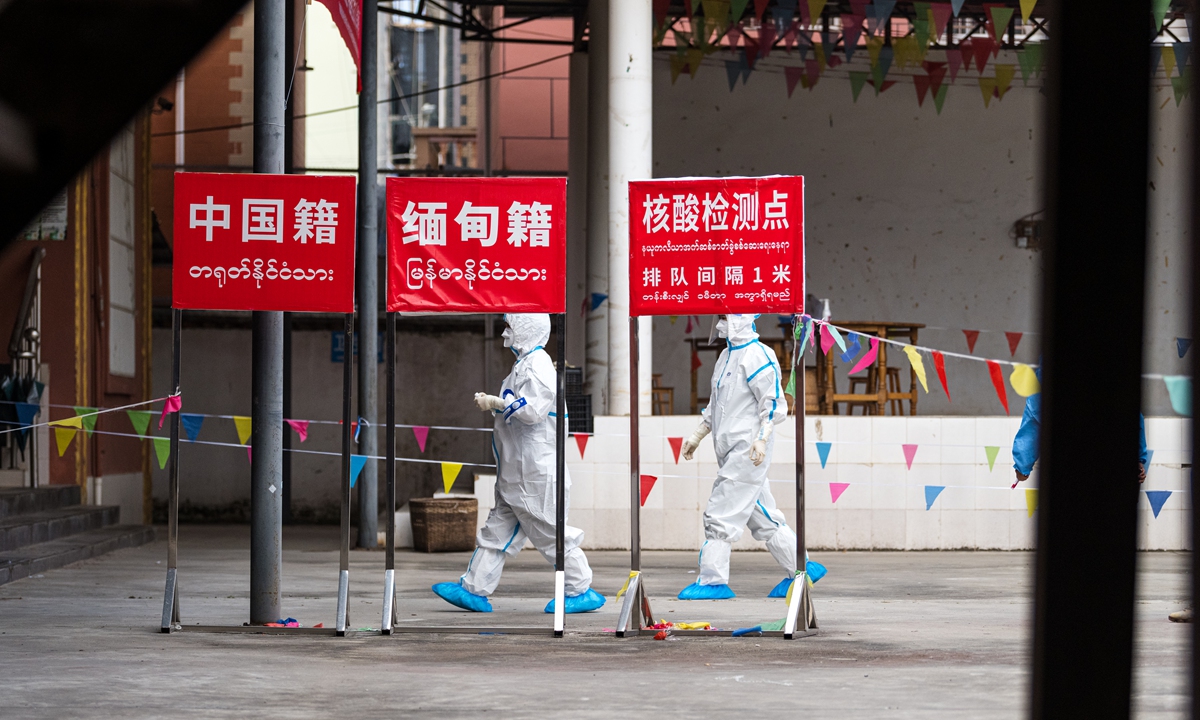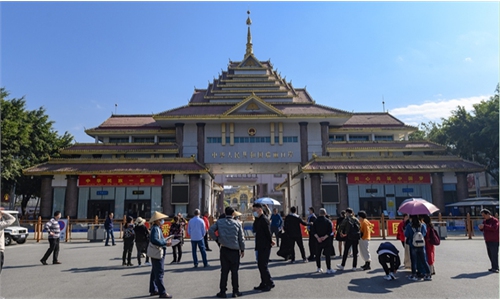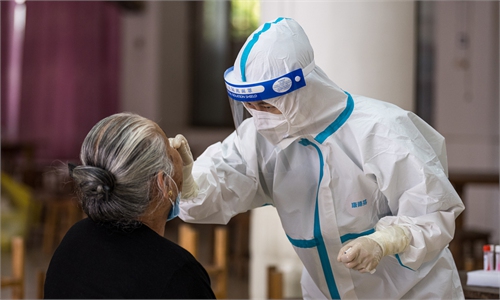Ruili to explore new anti-epidemic model for land ports: national epidemic response group
Experts suggest setting up buffer zone to reduce COVID-19 impact

Ruili Photo: VCG
Ruili, a China-Myanmar border city in Southwest China's Yunnan Province, is ramping up efforts to adjust its anti-epidemic policy as a visiting national epidemic response group calls on the city to accelerate the establishment of a new epidemic prevention and control model for land ports.
Experts believe that a new anti-epidemic model for port cities will not go beyond the scope of China's dynamic zero-case policy, but more could be done in Ruili, such as setting up a buffer zone, to reduce the impact of the epidemic on normal economic development.
In response to sporadic epidemic flare-ups and to ease public concern over the impact on their livelihoods, Ruili adjusted its epidemic risk classifications on Monday. Starting on Monday, villages and communities that reported zero positive COVID-19 cases and close contacts in the previous 14 days will be open, meaning local residents are able to travel around within the city, but they should take proper measures to prevent infections.
Villages and communities that were labeled "sealed-off zones" and "controlled zones" after reporting positive COVID-19 cases and close contacts in the previous 14 days will continue to follow strict measures and people should stay indoors.
The adjustment came as a national epidemic response group led by Liang Wannian, head of the experts' panel on COVID-19 response of the National Health Commission, visits the city to investigate the city's work on epidemic prevention and control.
In meetings with local officials on Sunday night, Liang said Ruili should stick to a dynamic zero-case policy, optimize concrete preventive measures, and better balance anti-epidemic and economic development.
It should ensure the establishment of a flexible, warm and effective epidemic response system, and accelerate the establishment of a new model for epidemic prevention and control in China's land ports, Liang said.
Experts interpreted Liang's visit to Ruili as a sign of the country's determination to contain COVID-19 flare-ups, but no official interpretation on a new anti-epidemic model for port cities had emerged as of press time.
A senior official from the Chinese Center for Disease Control and Prevention told the Global Times on condition of anonymity that he believed China's epidemic prevention and control policies are already being perfected in shielding against COVID-19, and the so-called new anti-epidemic model for port cities will not go beyond the scope of dynamic zero-case policy.
Given the long border between Myanmar and China in Ruili, and that residents of the two countries were used to having a borderless life before the epidemic, difficulties in preventing the imported virus come naturally.
With the tight control measures implemented since March, some businesses in the city and cross-border exchanges related to residents' daily lives have reportedly shut down, dealing a blow to local people's livelihoods.
The adjustment of measures came after Ruili subsidized local residents and businesses and helped them through economic difficulties. It also adjusted policies covering people who want to leave the city and the improper management of quarantine places.
In response to public concerns, Ruili authorities implemented measures to subsidize residents and businesses and help them get through economic difficulties in late October.
More precise anti-epidemic measures that could strike a balance between epidemic control and residents' normal livelihoods are likely to be mapped out in Ruili, so as to better implement the dynamic zero-case policy. This is mainly characterized by the strategy of "early detection, early reporting, early isolation and early treatment," the anonymous official said.
Another expert specializing in epidemic prevention and control who also required anonymity told the Global Times that he believed, on the basis of sticking to the dynamic zero-case policy, that the establishment of buffer zones along the border may be included in the new model for land ports.
This would be similar to the previous set-up of diverting international flights to certain airports or designated first-stop cold storage facilities in Northeast China's Dalian.
Experts said that the new anti-epidemic model in Ruili has great referential significance for other land ports, which shoulder the main responsibility of keeping the virus from entering China's territory. Port cities in Xinjiang and Inner Mongolia have also frequently reported imported cases.
According to the latest adjustment, residents in communities along the border including in Jiegao community are able to return home after being assessed as having no risk of viral transmission. The quota will only be open to Chinese citizens who have property, businesses or renting house. Foreigners and those eligible for vaccination but not vaccinated are temporarily not allowed to enter Jiegao communities.
A strict procedure will be required to return to the Jiegao border trading zone, including seven days of medical observation, a letter of commitment to home quarantine and three proofs of negative nucleic acid testing.
Cross-border goods are allowed to enter and exit Jiegao community if they are disinfected and have certificates required by customs.



